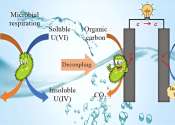Green hydrogen: Transportation in the natural gas grid
Researchers at the Fraunhofer-Gesellschaft have developed a technology for the energy-efficient and economic separation of hydrogen from natural gas. This membrane technology makes it possible for the two substances to be ...
Apr 1, 2021
1
32









